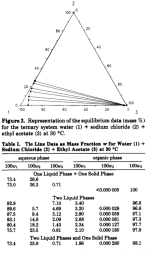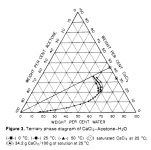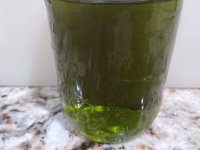Here is an interesting system: Ethyl Acetate, Water, NaCl (see image below).
Ethyl Acetate absorbs up to 3.40% water when mixed with plain water, and that drops down to 1.86% when mixed with brine (saturated NaCl). This can change with plant material and is only a 1st order approximation for ideal (pure) conditions.
After making a wet alkaline NaCl saturated cacti paste, free base mescaline should move into the ethyl acetate along with 1.9% of water. There should still be ~1.5% of water available to absorb, and one could take advantage of this by directly adding over the counter aquarium sulfuric acid drops (~10%) to the pull. In theory each 35mg drop of sulfuric could crash ~ 20mg of mescaline sulfate dihydrate I believe (or about ~570g for every ml of 10% sulfuric).
Ethyl Acetate absorbs up to 3.40% water when mixed with plain water, and that drops down to 1.86% when mixed with brine (saturated NaCl). This can change with plant material and is only a 1st order approximation for ideal (pure) conditions.
After making a wet alkaline NaCl saturated cacti paste, free base mescaline should move into the ethyl acetate along with 1.9% of water. There should still be ~1.5% of water available to absorb, and one could take advantage of this by directly adding over the counter aquarium sulfuric acid drops (~10%) to the pull. In theory each 35mg drop of sulfuric could crash ~ 20mg of mescaline sulfate dihydrate I believe (or about ~570g for every ml of 10% sulfuric).





 . Really makes me appreciate when we stumble across a system that seems to work well like lime-water paste/ethyl acetate/citric acid.
. Really makes me appreciate when we stumble across a system that seems to work well like lime-water paste/ethyl acetate/citric acid.